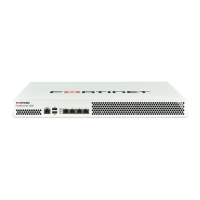Fine-tuning & best practices Page 122 FortiRecorder 2.4.2 Administration Guide
Logging & alert performance
• If you have a FortiAnalyzer, store FortiRecorder’s logs on the FortiAnalyzer to avoid resource
usage associated with writing logs to FortiRecorder’s own hard disks. See “Configuring
logging”.
• If you do not need a log or alert, disable it to reduce the use of system resources. See
“Configuring logging”.
• Avoid recording log messages using low severity thresholds, such as information or
notification, to the local hard disk for an extended period of time. Excessive logging
frequency saps system resources and can cause undue wear on the hard disk and may
cause premature failure. See “Configuring logging”.
Figure 9: Logs and Alerts > Log Setting > Local Log Settings
Packet capture performance
Packet capture can be useful for troubleshooting but can be resource intensive. (See “Packet
capture”.) To minimize the performance impact on your FortiRecorder appliance, use packet
capture only during periods of minimal traffic. Use a local console CLI connection rather than a
Telnet or SSH CLI connection, and be sure to stop the command when you are finished.
Regular backups
Make a backup before executing operations that can cause large configuration changes, such
as:
• Upgrading the firmware
• Running the CLI commands execute factoryreset or execute restore
• Clicking the Restore button in the System Information widget on the dashboard

